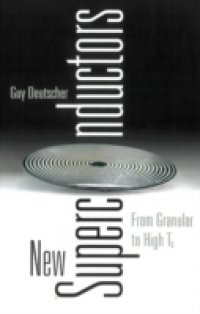How new are the high Tc superconductors, as compared to the conventional low Tc ones? In what sense are these oxides different from regular metals in their normal state? How different is the mechanism for high Tc superconductivity from the well-known electron-phonon interaction that explains so well superconductivity in metals and alloys? What are the implications of the new features of the high Tc oxides for their practical applications? This interesting book aims to provide some answers to those questions, drawing particularly on similarities between the high Tc oxides and granular superconductors, which also present a short coherence length and a small superfluid density.Contents:SuperfluidityCoherence Length, Penetration Depth and Critical TemperatureThe Phase TransitionPhase DiagramsGap, Symmetry and Pseudo-GapBasics on VorticesCuprate Superconductors Under Strong FieldsFrom Fundamentals to ApplicationsHTS Conductors and Their ApplicationsReadership: Condensed matter physicists, researchers and engineers in applied superconductivity.Key Features:Merges the perspectives and research of algebraists from a variety of disciplinesPresents new perspectives on connections between algebras, their representations, rings, and modules

